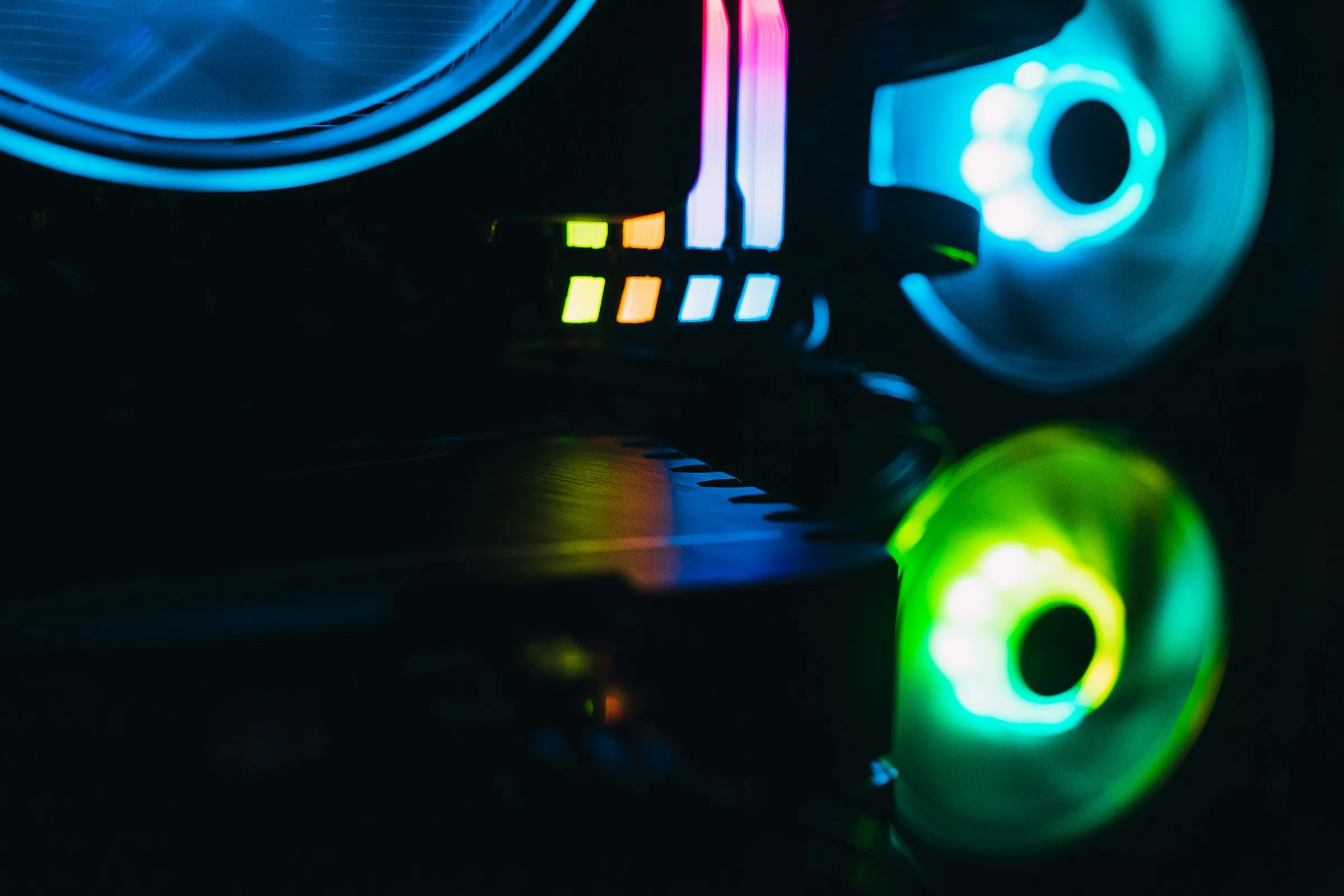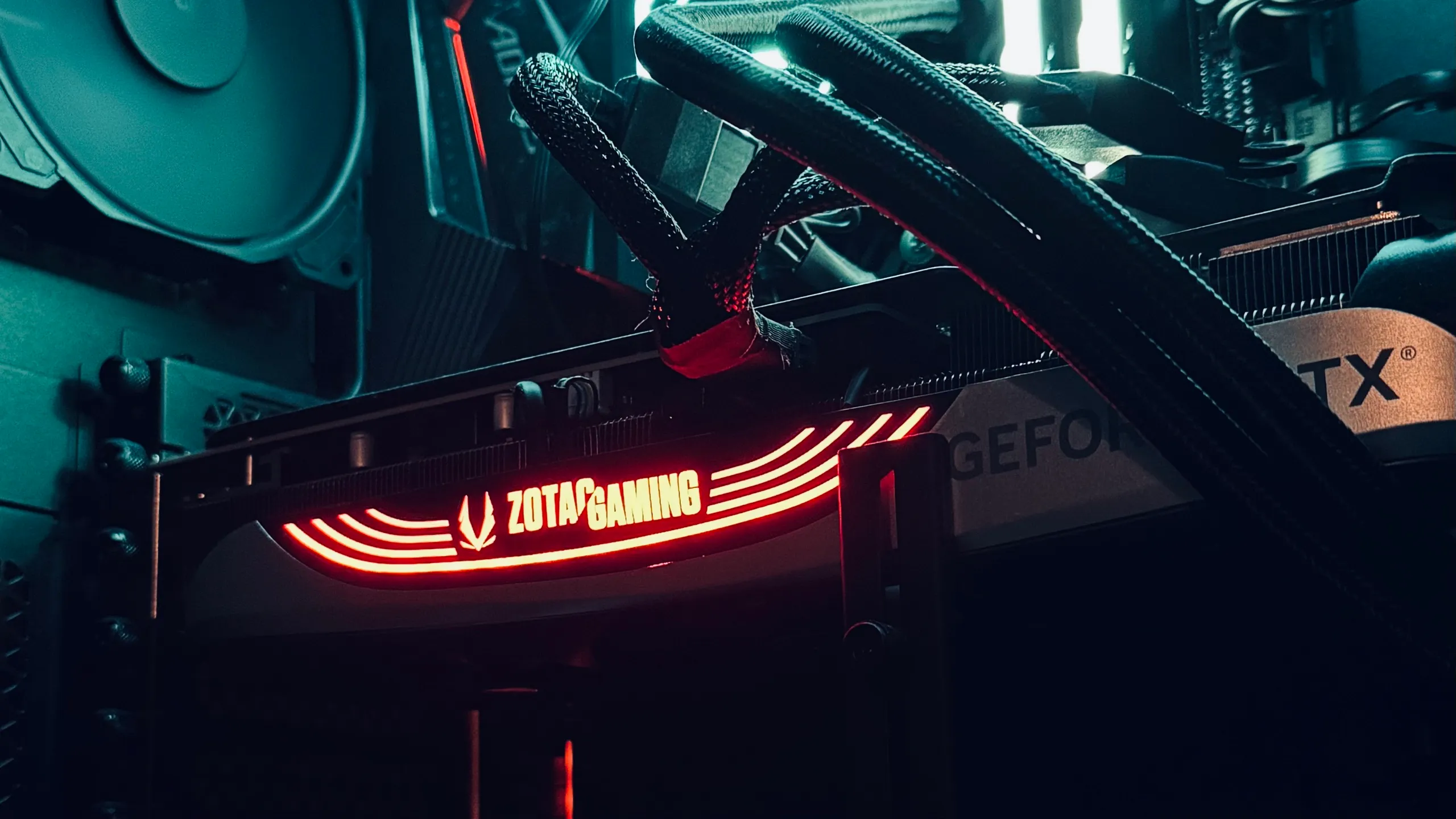The AMD Radeon RX 6700 XT graphics card is based on the AMD RDNA 2 architecture and is capable of delivering excellent performance and immersive visuals. The RX 6700 XT is very capable at providing a midrange gaming experience, but it can be even better with overclocking. In this blog, we will discuss how overclocking can help you get maximum performance from your RX 6700 XT graphics card. Specifically, we’ll be looking closely at MSI’s Radeon RX 6700 XT MECH 2X 12G card since one of its variants offers an interesting overclocking opportunity.
As a disclaimer, I didn’t initially intend to write about this on a blog post, so my record keeping wasn’t as rigorous as it could’ve been. It’s also difficult to go back and get some of the settings I used because I’ve since switched over to an NVIDIA 4000 series GPU and no longer have AMD Adrenalin installed.
Introduction to the AMD Radeon RX 6700 XT
The RX 6700 XT is a passably powerful graphics card designed for gaming and content creation. It is powered by the AMD RDNA 2 architecture and features the AMD Infinity Cache technology. This technology helps to increase the memory bandwidth of the graphics card and improves the overall performance. The AMD Radeon RX 6700 XT also features 12 GB of GDDR6 memory, which allows you to run high-resolution games and applications with ease.
The RX 6700 XT also features an advanced cooling system that helps to keep the graphics card running cool, even at peak performance. This helps to ensure that the graphics card is operating at its optimal performance level. Additionally, the AMD Radeon RX 6700 XT also supports multiple display outputs, making it ideal for multi-monitor setups.
In my experience, the card performs well for 1440p gaming between 120 and 144 FPS at medium to high settings. There are caveats to that of course, but it could have its own blog post, so it won’t be talked about in detail here.
MSI Mech 2X 6700 XT
The MSI Mech 2X 6700 XT graphics card features a dual fan cooling system powered by two TORX 3.0 fans, which helps to keep the graphics card running cool even at high temperatures.
I found AMD Adrenalin to work very well for configuring the card to make the best use of its performance capabilities. For example, Adrenalin allows the enabling of Smart Memory Access when a 6000 series graphics card is paired with a 5000 series CPU. You can also use it for graphically defining fan curves.
However, the card ships with two different settings for thermal design power (TDP) from the factory. Looking at Newegg, one can see the TDP value is displayed at 230W. Of course, this isn’t really the whole picture. There are two different settings for this value from the factory: 189W and 230W. To determine which variant you have, you can use CPU-Z to determine the revision number of the card. Revision C5 is the 189W variant and C1 is the 230W variant. What helped me understand this was this Reddit thread. As an aside, one can also determine which revision they have by exporting their AMD Adrenalin settings and then opening the settings file in a text editor. The settings file is an XML file and the revision is an attribute of one of the parent elements.
Interestingly, my card had a setting of 196W to start which isn’t either of the two values from the thread even though the card is revision C5.
Understanding Overclocking
Overclocking is the process of increasing the clock speed of a computer component beyond its factory-specified settings. It is done to improve the performance of the component and is often done with the help of specific software. Overclocking is a great way to get more performance out of your RX 6700 XT graphics card, as it can help to increase the clock speeds and improve the overall performance.
When you overclock a component, you are essentially running it at a higher frequency than it was designed to run. This can lead to an increase in the temperature of the component, as well as an increase in the power consumption. It is important to keep an eye on the temperatures and the power consumption of the component when overclocking, as this can help to ensure that it is running safely and efficiently.
The Benefits of Overclocking the MSI Mech 2X 6700 XT
Since the card ships from the factory with two different variants, it can be useful to overclock the card to get the performance it’s capable of. Overclocking in this case is going to include increasing the clock speed, memory bandwidth, and TDP setting. This is going to increase the power consumption and temperatures of the card.
Regarding increases to the TDP setting, that’s where the MorePowerTool comes in. The MorePowerTool is a great tool for those looking to get the most out of their graphics card. This tool can be used to change many settings for the card which are not available through the Adrenalin or MSI Afterburner software.
AMD Radeon RX 6700 XT Overclocking Process
As a disclaimer, this process could damage the card or other parts of the system. So proceed with caution.
Tips for Overclocking an AMD Radeon RX 6700 XT
There are a few tips that you should keep in mind when overclocking your graphics card. Firstly, it is important to start with small increments when increasing the clock speeds and voltages of the graphics card. This will help to ensure that the graphics card is running safely and efficiently.
It is also important to keep an eye on the temperatures and power consumption of the graphics card while overclocking. If the temperatures or power consumption is too high, you should reduce the overclocking settings. Additionally, it is important to use the correct cooling solutions for the graphics card. This can help to ensure that the graphics card is running at its optimal performance level. Specifically, it’s crucial to make sure an appropriate fan curve is set, the card is in a case with good airflow, and the PSU can deliver the power the card needs.
My Process
The process I took to overclock the card was very controlled. At each step, I made sure to make only one change to the configured settings. After making a change, I would then run a benchmark test in 3DMark to see how the change affected the card’s performance. In later iterations, as I got closer to the 230W TDP value, I also ran a few stress tests to make sure the card was able to handle the new power setting. The stress tests were the riskiest part of the process, but provided peace of mind that I had done things correctly. The test I used for benchmarking was Time Spy for DirectX 12.
Here are some details about the hardware:
- GPU: RX 6700 XT
- CPU: Ryzen 5 5600
- Case: Corsair 4000D Airflow
- CPU Cooler: Corsair H100i Elite Capellix
- RAM: 2x16GB DDR4 3200 MHz Corsair Vengeance
Now, moving onto the test results.
First, before tinkering with GPU overclock settings, I ran a benchmark to get a baseline score for the build. The initial score I got was 11790.
Next, I used AMD Adrenalin to enable aggressive overclock settings. Note that I didn’t save a screenshot of the settings, and I’ve since moved to an NVIDIA 4000 series GPU, so I can’t get these settings back at the moment. From what I recall, I had the voltage maxed out, the min frequency set to 2700, and the max frequency set to 2800 under the GPU Tuning box. Additionally, I had VRAM tuning enabled with memory timing set to fast, advanced control enabled, and the max frequency set all the way to 2150. Lastly, I also had power tuning enabled with the power limit set to 100%. Interestingly, this is also a tip-off that something wasn’t quite right with the card. Generally speaking, power tuning should let you go past 100% with other graphics cards. There are videos online which show Adrenalin users recommending values like 110%, but that option wasn’t available to me. Initially, these settings yielded somewhat poor results. The Time Score was 11705.
With the overclock settings in place and benchmarked, I then proceeded to use the MorePowerTool to up the TDP limit in increments of 4. At 206W, the Time Spy Score was 11853. Overall, this was about a 0.5% increase.
At each increment, I saw slight performance improvements. Eventually, I was up to 226W for TDP. The Time Spy score was 12506 which translates to an overall 6.1% increase for the score. For the graphics score specifically, this was an 8.3% improvement. Additionally, this also meant an increase of 3C for the average temperature for the GPU from 55C to 58C. For this system, 3DMark showed this score to be towards the upper limit of what others have achieved.
After reaching the 226W mark, I decided to call it quits. I was already pushing the card very close to limit for the manufacturer and beyond what it was initially set to. Stress tests in 3DMark showed the configuration was stable, and I was happy with the improvements.
In terms of experience, I noticed higher frame rates counts on average and less stutter (i.e. there was a smoother feel).
One last thing to consider is how overclocking the CPU would’ve affected the Time Spy score. After replacing the GPU with a 4000 series NVIDIA card, I learned about Precision Boost Overdrive which have options that can be enabled in the BIOS to get the maximum performance out of the 5600 CPU I have installed. Had I known about this earlier, the overall Time Spy score would’ve definitely been a bit higher than what was seen here.
Conclusion
Overclocking an RX 6700 XT graphics card can help to improve the performance of the graphics card and can help to take your gaming experience to the next level. There are plenty of tools and resources available online to help get the most performance out of the card. However, it is important to keep an eye on the temperatures and power consumption of the graphics card while overclocking and to use the correct cooling solutions for the graphics card.
I share in the frustration other users had with this card. When I realized there was a problem, I felt like I hadn’t gotten my money’s worth initially. In the grand scheme of things, the ~8% boost isn’t all that much, but it was the principle of it that resonated with me. On the lighter side of things, it was a great opportunity to learn more about hardware and PC performance tuning which is something that will carry with me beyond this particular experience. All in all, it was a fine card which handled everything I threw at it with grace.

